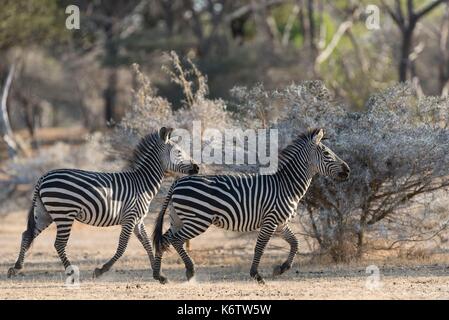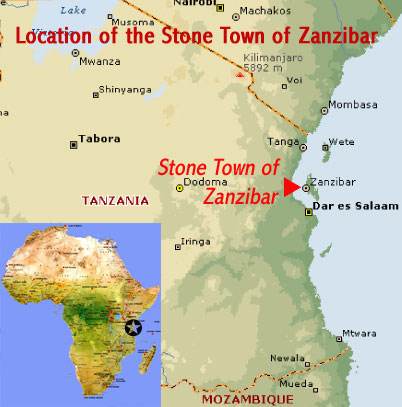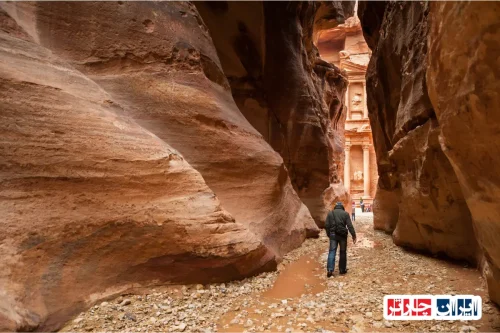Discover the Wonders of Selous Game Reserve in Morogoro Region Tanzania
Selous Game Reserve in Morogoro Region Tanzania is one of Africa’s most renowned and expansive wildlife conservation areas, offering an unparalleled experience for nature lovers and adventure seekers alike. Covering a vast landscape that includes rivers, savannahs, and dense forests, this reserve is home to a diverse array of wildlife, including some of the most iconic species such as elephants, lions, giraffes, and numerous bird species. Visitors to this remarkable sanctuary can enjoy thrilling safaris, witness breathtaking landscapes, and learn about conservation efforts aimed at protecting endangered species. The reserve’s strategic location within the Morogoro Region makes it accessible for travelers seeking a genuine African safari experience, combining rich biodiversity with cultural interactions with local communities. Whether you’re interested in wildlife photography, eco-tourism, or simply exploring the natural beauty of Tanzania, Selous Game Reserve offers an unforgettable journey into the heart of Africa’s wilderness. To explore more about this incredible destination, visit Selous Game Reserve-Iran Charter and learn how to plan your adventure today.

Discovering Selous Game Reserve in Morogoro Region Tanzania: An Ultimate Guide to East Africa’s Largest Wildlife Sanctuary
Selous Game Reserve, situated in the Morogoro Region of Tanzania, stands as one of Africa’s most expansive and diverse protected areas. Covering over 50,000 square kilometers, this UNESCO World Heritage Site offers unparalleled opportunities for wildlife enthusiasts and eco-tourists alike. Its vast landscapes, including rivers, savannahs, and dense woodlands, serve as a vital habitat for numerous species, making it a premier destination for safaris and nature exploration in East Africa. Visitors can experience the thrill of observing majestic elephants, lions, and rare wild dogs in their natural environment, all while contributing to conservation efforts that sustain this unique ecosystem.
The Significance of Selous Game Reserve in Conservation and Regional Development
As one of the most important conservation areas in Tanzania, Selous Game Reserve plays a critical role in preserving biodiversity and supporting local communities. Its strategic location in the Morogoro Region enhances regional ecological stability and promotes sustainable tourism. The reserve’s rich biodiversity not only attracts international visitors but also provides essential ecosystem services such as water purification, climate regulation, and habitat connectivity. Conservation initiatives within the reserve have led to successful protection of endangered species, including the African wild dog and the black rhinoceros, ensuring their survival for future generations. Moreover, tourism revenue generated from safaris and eco-activities contributes significantly to local economic development, empowering communities and fostering environmental awareness.
Historical Background and Protective Measures in Selous Game Reserve
The history of conservation in Selous dates back to the early 20th century when the Tanzanian government recognized its ecological importance. Over the decades, extensive efforts have been made to establish and expand protected zones, enforce anti-poaching laws, and promote community-based conservation programs. These measures have successfully reduced illegal hunting and habitat destruction, allowing wildlife populations to thrive. The reserve’s designation as a UNESCO World Heritage Site in 1982 further emphasizes its global significance and the need for ongoing preservation efforts. Collaborative initiatives with international conservation organizations have strengthened management practices, ensuring the resilience of this vital ecosystem amidst increasing environmental pressures.
Natural Attractions and Scenic Landscapes of Selous
Selous Game Reserve boasts a stunning array of natural features, from winding rivers like the Rufiji to expansive plains and lush forests. These diverse landscapes create a picturesque backdrop for wildlife viewing and photography. The Rufiji River, in particular, is a focal point for boat safaris, offering a unique perspective to observe aquatic and terrestrial animals coexisting along the waterways. The scenic vistas of sunset over the savannah, the sight of herds of elephants crossing the plains, and the roar of lions at night make Selous a truly immersive experience for nature lovers. Its untouched scenery provides countless opportunities for outdoor activities, including guided walks, birdwatching, and camping under the stars.
Wildlife Diversity and Endangered Species in Selous
Home to a remarkable variety of fauna, Selous is a sanctuary for many iconic African species. Large herds of elephants and buffalo roam freely across the reserve, while predators such as lions, leopards, and cheetahs hunt in the open plains. The reserve is also a critical habitat for the endangered African wild dog, whose populations are carefully monitored and protected. Birdwatchers can enjoy over 400 species, including kingfishers, herons, and raptors, making it a birding paradise. The aquatic ecosystems support crocodiles and hippos, adding to the rich biodiversity that characterizes this region. Conservation programs focus on safeguarding these species through habitat management, anti-poaching patrols, and community engagement initiatives.
Wildlife Conservation Strategies and Community Engagement
Effective management of Selous Game Reserve relies on integrated conservation strategies that involve local communities, government agencies, and international partners. Anti-poaching patrols utilize advanced technology such as drones and camera traps to monitor wildlife movements and deter illegal activities. Community-based programs aim to involve local residents in conservation efforts by providing alternative livelihoods, eco-tourism training, and environmental education. These initiatives foster a sense of ownership and responsibility among communities, reducing human-wammal conflicts and promoting sustainable resource use. The collaborative approach ensures the long-term protection of biodiversity while supporting socio-economic development in the Morogoro Region.
Tourism and Safari Experiences in Selous
Selous offers a wide range of safari experiences tailored to different interests and budgets. Guided game drives provide close encounters with Africa’s iconic wildlife, while boat safaris along the Rufiji River reveal aquatic species and birdlife in their natural habitat. Walking safaris, led by experienced rangers, allow visitors to explore the wilderness on foot, gaining a deeper appreciation for the ecosystem’s complexity. Luxury lodges and tented camps are strategically located to maximize wildlife sightings and comfort. Responsible tourism practices are encouraged to minimize environmental impact and ensure the preservation of the reserve’s pristine condition. Visitors are advised to plan their trips during the dry season, from June to October, when wildlife congregates around water sources, enhancing the safari experience.
Best Time to Visit and Practical Tips for Travelers
The optimal period for visiting Selous is during the dry season, from June to October, when animals are more visible near waterholes and vegetation is less dense. Travelers should prepare by packing appropriate clothing, sun protection, and binoculars for wildlife viewing. It is essential to book safaris and accommodations well in advance, especially during peak seasons. Respect for local customs, adherence to park regulations, and environmental responsibility are crucial for a safe and enjoyable trip. Travelers should also consider health precautions such as vaccinations and anti-malarial medication. Engaging with reputable tour operators ensures a well-organized and enriching safari experience, contributing to the conservation efforts that sustain this remarkable ecosystem.
Local Culture, Traditions, and Their Role in Conservation
The indigenous communities surrounding Selous Game Reserve have a rich cultural heritage rooted in traditional hunting, fishing, and land management practices. These communities play a vital role in conservation by preserving traditional knowledge and participating in eco-tourism initiatives. Education programs aim to raise awareness about the importance of biodiversity and sustainable resource use, fostering a conservation-minded attitude. Traditional beliefs and customs often emphasize harmony with nature, which aligns with modern conservation goals. Collaborative efforts between park authorities and local tribes have led to community-led patrols and conservation projects, ensuring that cultural values support environmental protection. This synergy between tradition and modern conservation strategies enhances the resilience of the ecosystem and promotes sustainable development in the Morogoro Region.

Frequently Asked Questions about Selous Game Reserve in Tanzania
- What is the size of Selous Game Reserve?
- Selous Game Reserve covers over 50,000 square kilometers, making it one of Africa’s largest protected areas and a vital habitat for diverse wildlife species.
- Where is Selous Game Reserve located?
- It is situated in the Morogoro Region of Tanzania, in East Africa, offering a unique blend of rivers, savannahs, and woodlands.
- Why is Selous considered important for conservation?
- Selous plays a crucial role in preserving biodiversity, protecting endangered species like the African wild dog and black rhinoceros, and supporting regional ecological stability.
- What are the main natural attractions in Selous?
- The reserve features winding rivers such as the Rufiji, expansive plains, lush forests, and scenic landscapes perfect for wildlife viewing and photography.
- What wildlife can visitors expect to see in Selous?
- Visitors can see large herds of elephants, buffalo, lions, leopards, cheetahs, crocodiles, hippos, and over 400 bird species, including kingfishers and raptors.
- How does conservation involve local communities?
- Community engagement includes eco-tourism training, alternative livelihoods, and traditional knowledge preservation, fostering sustainable coexistence and reducing human-wildlife conflicts.
- What are the best times to visit Selous?
- The ideal period is during the dry season from June to October when wildlife congregates around water sources, making sightings easier.
- What activities can tourists enjoy in Selous?
- Tourists can partake in game drives, boat safaris, walking safaris, birdwatching, and camping, with luxury lodges available for comfortable stays.
- How can I ensure responsible tourism in Selous?
- By choosing eco-friendly lodges, respecting park rules, minimizing environmental impact, and supporting conservation initiatives.
- Are there any threats to wildlife in Selous?
- Illegal poaching, habitat destruction, and human-wildlife conflicts pose threats, but ongoing anti-poaching efforts and community programs help mitigate these issues.
- What is the significance of UNESCO designation for Selous?
- Being a UNESCO World Heritage Site highlights its global importance, encouraging international support for conservation and sustainable tourism.
- How do conservation strategies protect endangered species?
- Through anti-poaching patrols, habitat management, community involvement, and monitoring programs aimed at safeguarding vulnerable populations.
- What infrastructure is available for visitors?
- There are various lodges, tented camps, and organized safari tours, along with facilities for guided walks and boat safaris.
- How does tourism benefit local communities?
- Tourism generates revenue, creates jobs, and funds conservation projects, empowering local residents and promoting sustainable development.
- What should travelers prepare before visiting Selous?
- Pack appropriate clothing, sun protection, binoculars, and necessary vaccinations. Booking safaris and accommodations in advance is recommended.

























